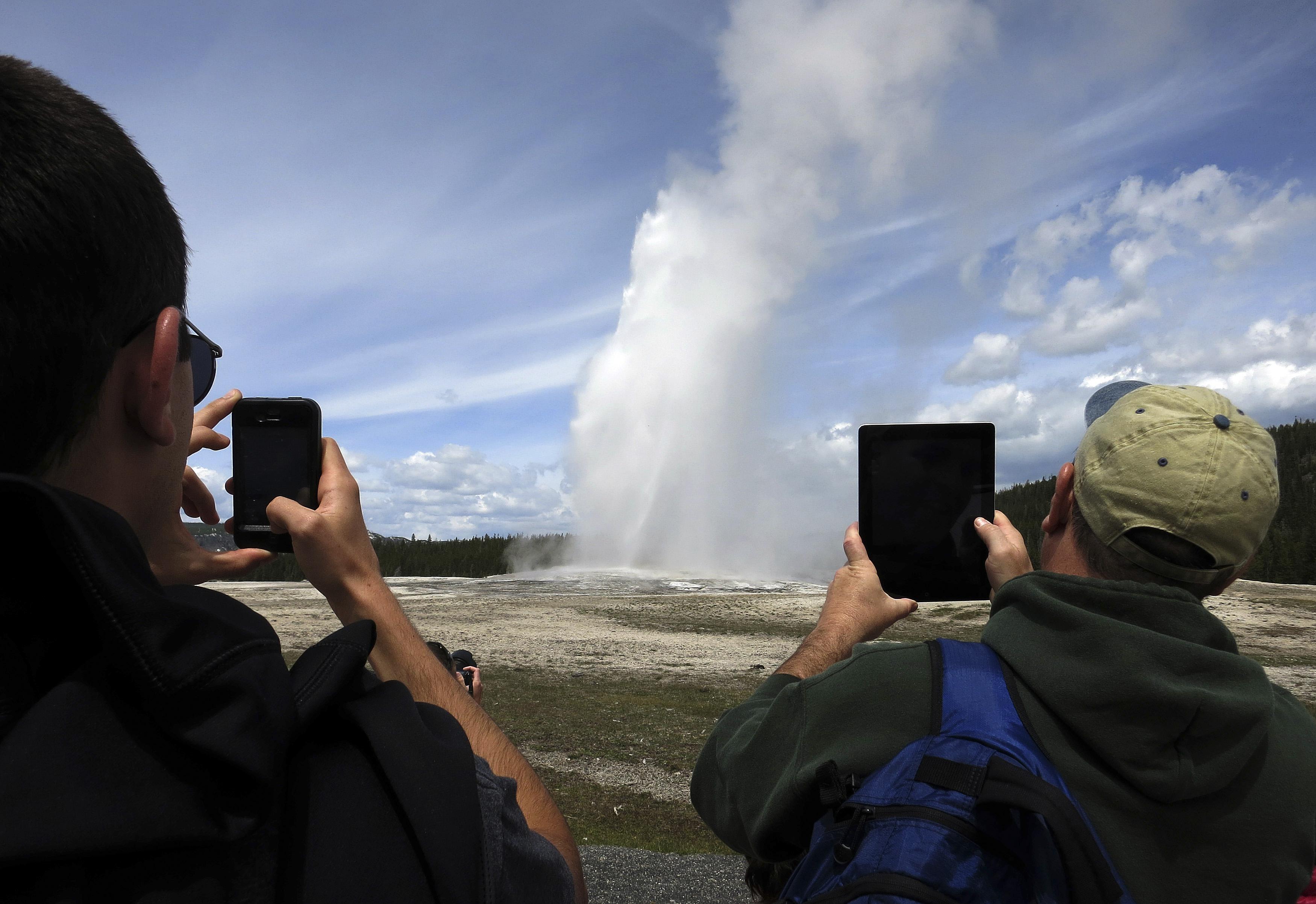A new proposal may make it a little bit harder to get off the mobile grid in Wyoming’s national parks. The National Parks Service is now in talks with a Louisiana-based company called CenturyLink to lay $34 million worth of fiber optic line through Yellowstone and Grand Teton national parks, improving mobile connectivity and speed. The plans come as the NPS gets ready for a “Go Digital” promotional campaign complete with its own hashtag (#NationalParks) to celebrate its 100th anniversary in 2016.
Yellowstone has had a cellphone and Wi-Fi plan since 2009, though coverage is spotty, and expansion of coverage through fiber optic wiring would make Yellowstone’s existing technological offerings more effective. QR codes in visitor booklets can be scanned to link to an online trip planner, and apps have been developed by private companies to alert users to nearby wildlife, though only where there is cell service.
Earlier this year, Canada announced similar plans to equip 15 to 20 remote sites with high-speed Internet, with the possibility of expanding to a total of 75 over the next three years if the first round goes well. A representative of Parks Canada told AFP such measures make sense for an increasingly urbanized Canada, saying that “for young people from cities, things are different.” The desire to cater to increasingly plugged-in visitors was echoed by an NPS representative last summer, when the service announced a pilot program to expand cell coverage in five national parks, hoping to explore how the NPS can enhance the visitor experiences of “new audiences who rely on smartphones and tablets to connect them to the things that are important to them.” Possible features include text message weather alerts and access to online information about park features. At the time, a Park Service spokesman said that expanded Wi-Fi could also cut costs by digitizing materials that need to be printed and distributed. Visitor centers, too, have begun to be phased into the digital space to save money.
One of the biggest advocates for these changes is the National Park Hospitality Association, a business trade group representing hotels and restaraunts on National Park grounds. which was behind a recent temporary installation of Wi-Fi at the Grand Canyon. It was shortly after the NPHA released a set of recommendations advocating for expanded cell service in parks and highlighting the value of connectivity that the NPS first launched its pilot program to expand coverage last year. For the NPHA, expanding Wi-Fi also offers the money-making opportunity of concessionaires charging visitors additional fees for accessing Web content beyond just the park website. Cell providers, another obvious advocate for expanded coverage in parks, argue better service improves safety through enabling easier communication between rangers and first responders, and that mobile apps could help users more fully explore plant and animal life.
The Yellowstone plans and others like them have garnered ire from interest groups like Public Employees for Environmental Responsibility, who filed a public records request for documents on the plans and whose director has said that the long-neglected infrastructure needs of the National Parks—“everything from sewers to roads to bridges to collapsing visitors centers, crumbling restrooms”—should take precedence over tech upgrades. The troubled financial status of America’s national parks is well-documented, and though officials haven’t indicated they would be the ones to cover the installation, a spokeswoman from CenturyLink has said that costs would have to be covered by the Park Service and the companies who would benefit from the service areas in order to make financial sense for CenturyLink in such remote areas. Whether better reception will help or hinder park visitors looking to heed the call of the wild is still an open question.
